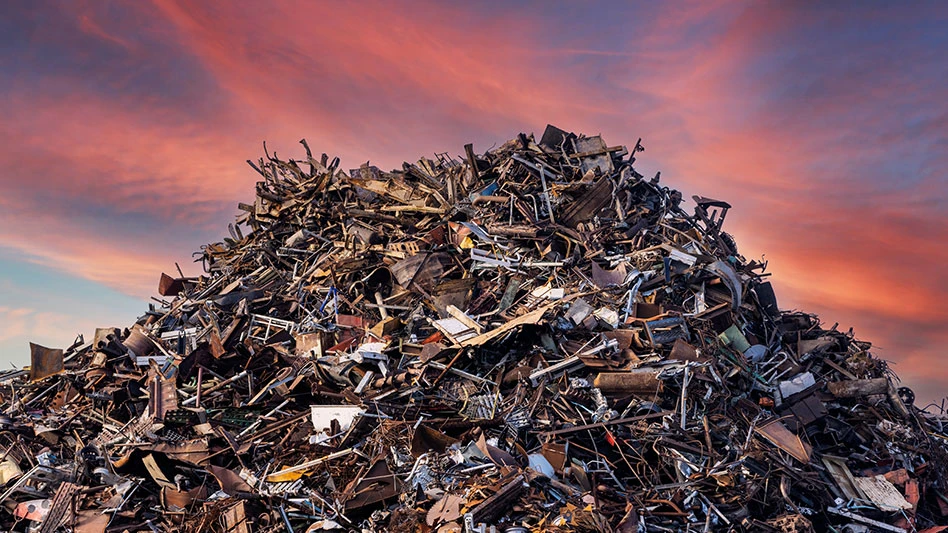According to several paper stock dealers and to mill buyers, while paper stock prices have remained fairly stable heading into April, the plateau may conceal a sink hole. Several recyclers say that despite the generally positive macro-economic signs, prices appear poised to soften during the early part of the second quarter of 2011. However, these same recyclers add, such price declines would likely be modest.
One key reason for the expected softening in some paper stock grades—especially bulk grades such as old corrugated containers (OCC), old news (ONP) and mixed paper—could be recent price spikes. A Midwestern dealer speculates that prices for ONP and mixed paper may have overshot more equitable levels, which could be attributed to aggressive buying of ONP from one Southern paperboard mill.
A mill buyer in the Southwest says that during the first half of 2011, OCC prices will be stable to trending downward. An oversupply in many regions of the world is applying downward pressure on OCC. Many domestic consumers have ample inventories of raw material and finished products.
OCC markets also may be affected by reports that International Paper is taking downtime at some board mills in the South, large consumers of OCC and other kraft grades. This will reduce demand for some material, at least in the short term.
One recycler says that, with high paper stock prices, several mills are looking to cut their new paper stock purchases, switching instead to using more wood chips.
“I have been told one paper company executive told his purchasing manager not to buy any waste paper with prices [being] so high. Instead, they were told to buy more wood chips,” another recycler notes.
This strategy is not universally possible, but for those mills that are capable of moving between the two types of furnish, a switch to wood chips would reduce overall demand for OCC and double-lined kraft cuttings.
Also playing a role in the recent softening in the OCC market has been the continued problems with the gypsum board industry. This sector has been hard hit by the drop in new housing starts. One paper recycler calls the situation “dire.”
“These mills are buying less material,” the dealer says.
Mixed paper and ONP also have seen downward pricing pressures. A larger consumer that had played a key role in driving the market for mixed paper and ONP earlier this year has halted its orders.
A paper stock dealer in the Midwest notes that the spike in prices that accompanied the boost in demand generated an inferior type of fiber.
For ONP, the steady drop in generation is constraining supply. Despite slightly sluggish demand for ONP as a raw material, the lack of new material is keeping prices at a fairly high level.
After a period when bad weather cut into the supply of some bulk grades earlier this year, weather has not been a problem more recently, so generation of new material has been improving. “There is lots of paper floating out there,” the Southwestern mill buyer says. “At the same time, mills are very full.”
Another paper recycler, taking a long-term outlook, says the closure of a number of mills, especially on the paperboard side, could create finished product shortages going forward. As the economy steadily improves, domestic mills might have some challenges meeting their orders. Already, he notes, mills are selling more product than they produce, which seems to indicate that they are selling off inventory.
The export market is creating issues for dealers. The catastrophe in Japan could pose some challenges for some exporters. While Japan has been a sizable exporter of recovered fiber to China, the damage in that country could force some mills in China to redirect their orders to the U.S. and Western Europe.
There continue to be reports that Chinese mill buyers are becoming choosier in regard to the quality of the material they are taking in. An exporter notes that many of the larger buyers are looking to keep their quality standards elevated, which might pose problems for many recyclers who have been moving recovered fiber from single-stream facilities.
However, another exporter says demand from China for many grades of recovered fiber is fairly strong.
(Additional information on secondary paper markets, including breaking news and consuming industry reports, is available at www.RecyclingToday.com.)

Explore the April 2011 Issue
Check out more from this issue and find your next story to read.
Latest from Recycling Today
- Altilium produces EV battery cells using recycled materials
- Brightmark enters subsidiaries of Indiana recycling facility into Chapter 11
- Freepoint Eco-Systems receives $50M loan for plastics recycling facility
- PET thermoform recycling the focus of new NAPCOR white paper
- Steel Dynamics cites favorable conditions in Q1
- Hydro starts up construction in Spain
- Green Cubes unveils forklift battery line
- Rebar association points to trade turmoil





